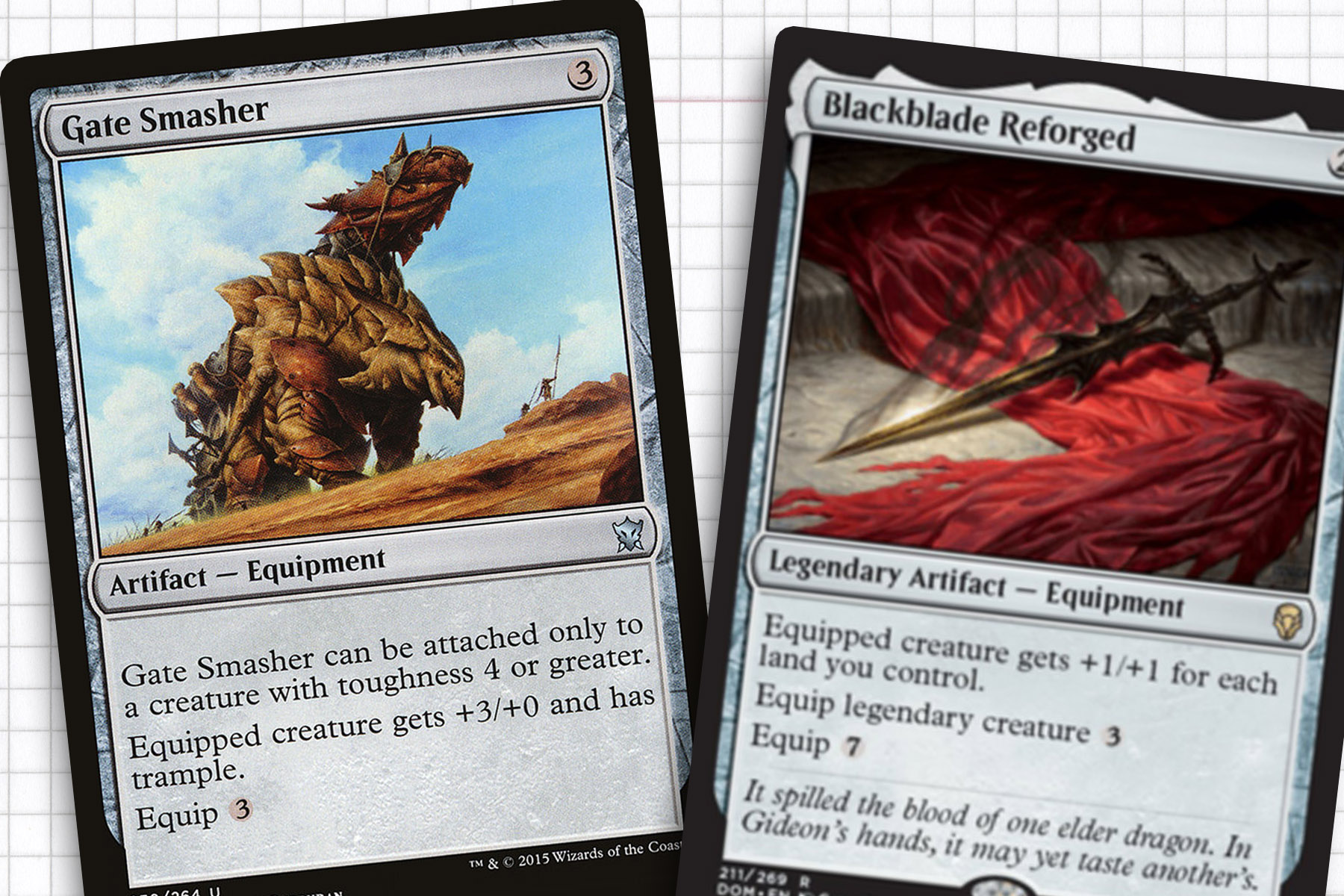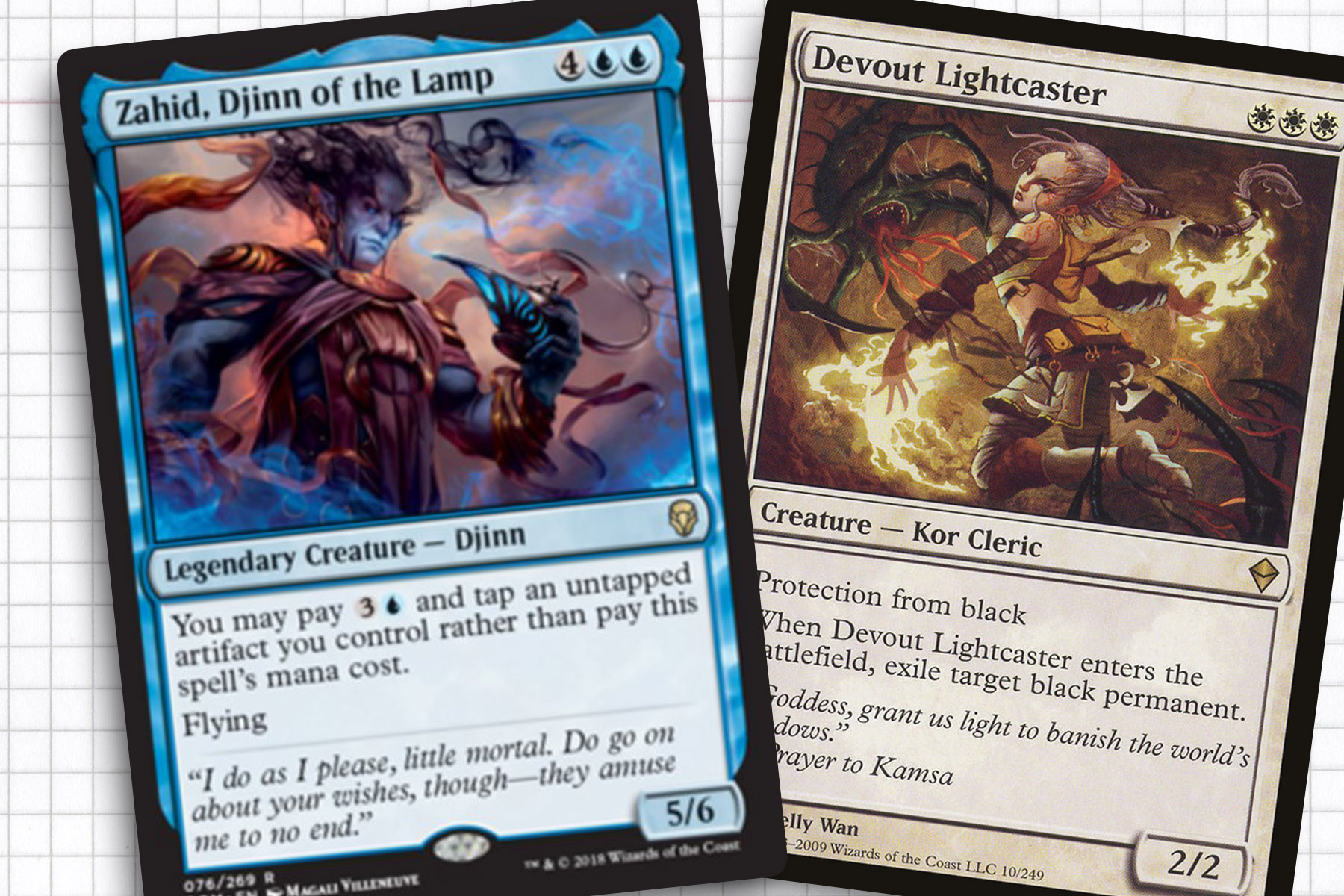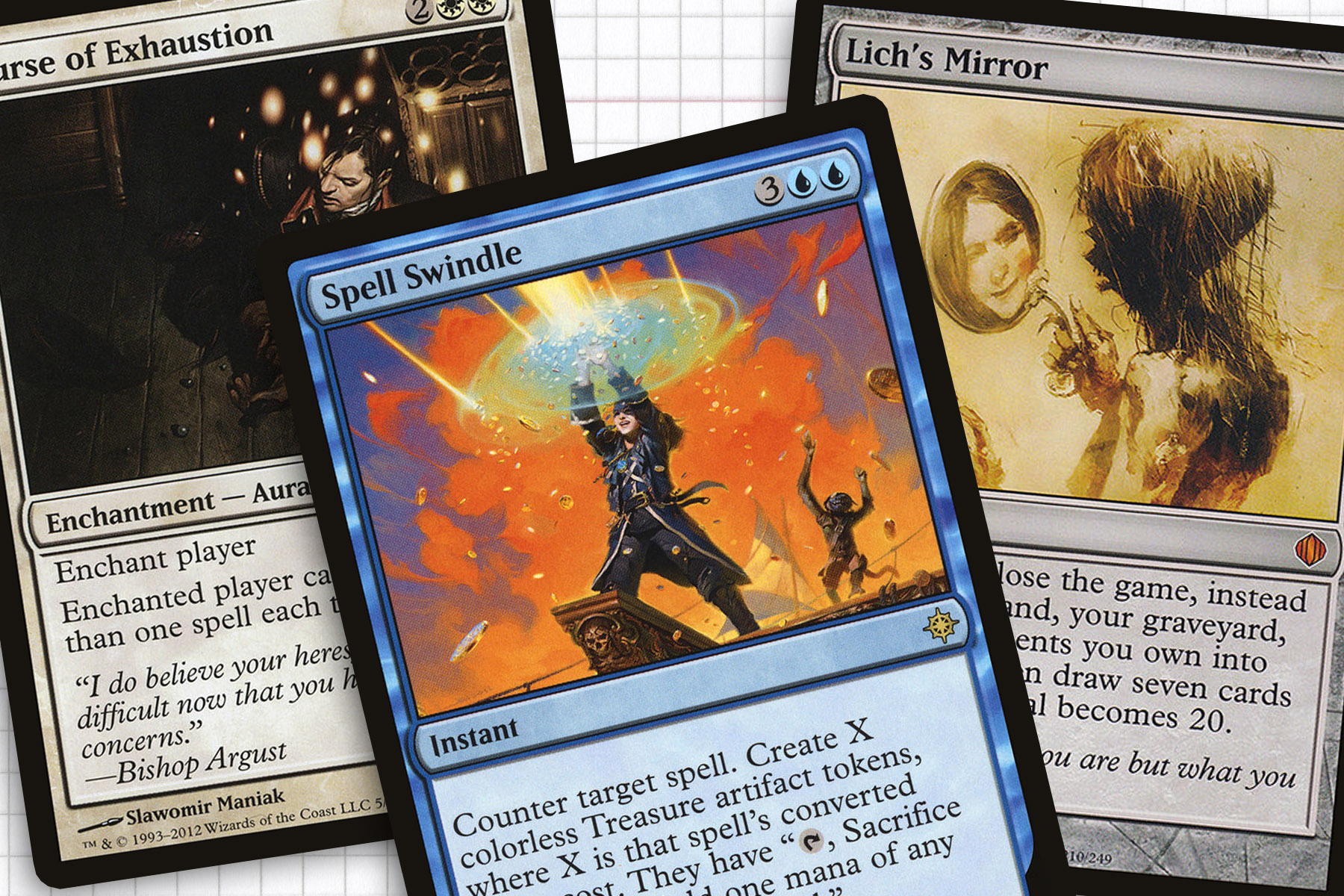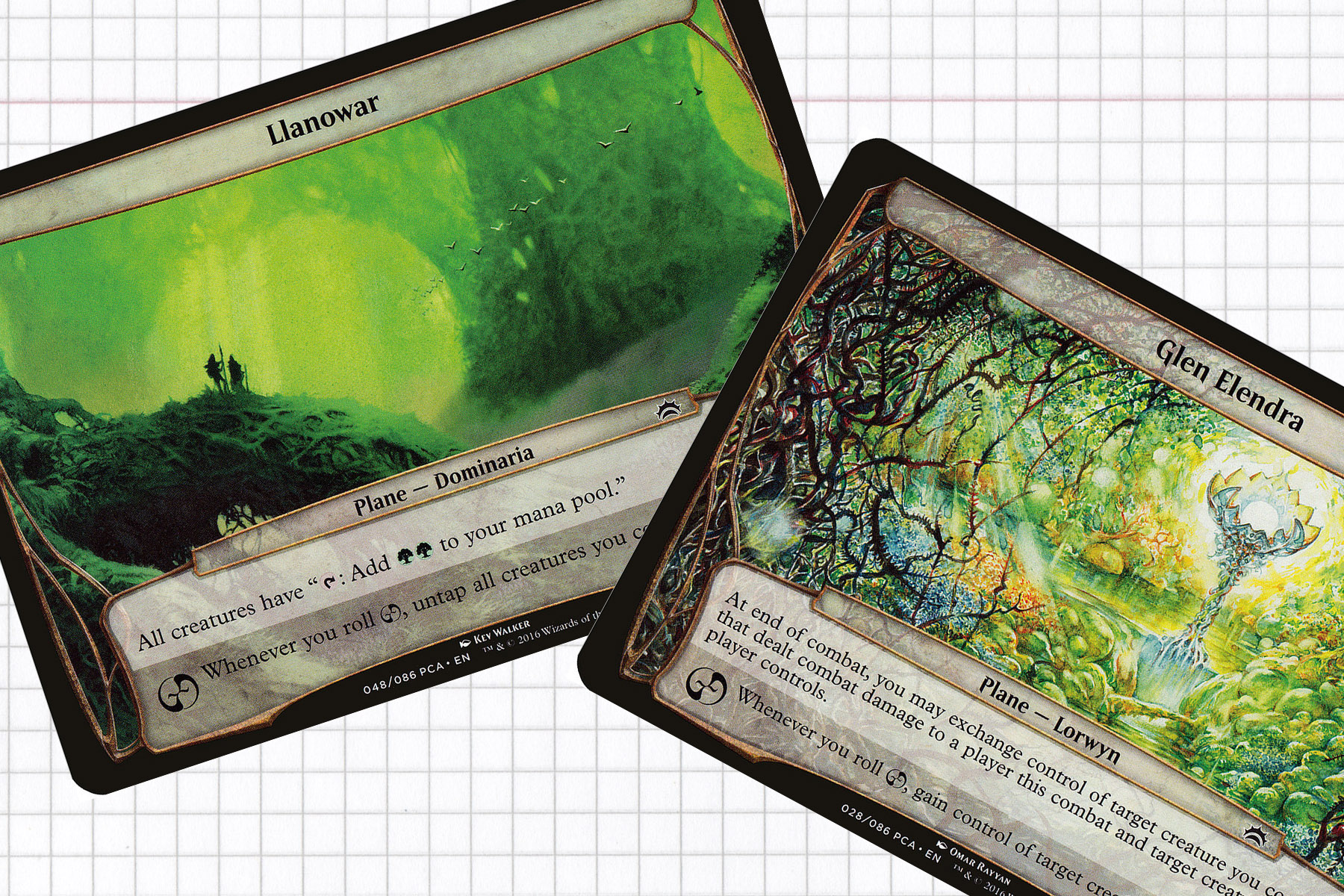Today was an article meant for the middle of March that got pushed back as it became clear that one of Dominaria’s themes was going to be the rich history of the plane itself. That theme carries over into what I wanted to capture in this deck. The unfortunate part of this awkward preview season is that it upended the pacing of all of these really cool legends by giving us half of the masterpiece. But, with Dominaria previews rolling out over the last few weeks I have been feeling an joyful sense of a return to my youth, both in the lore of this plane and just the back to basics fantasy that drew me in originally as it related to properties from earlier in my life.
Starting in elementary school I had two friends, Justin and another Ryan, who helped me get into classic fantasy. While I never had the availability or drive to be apart of their D&D campaigns or read all of Tolkien’s work like they did; they made the genre attractive enough that even after turning 18, our preferred hang out time consisted of a very long Champions of Norrath campaign on the Playstation 2. A few years later, while I was in college, a group of my friends let me sit in on a few D&D sessions of their long-running campaign. I would later start a short lived campaign and even DM one. This reflection on my role playing game history got thinking about the overlap with Magic, enter Hunding Gjornersen.
Mr. Gjornersen—like most if not all of the legends from Legends—was based in part on a character from a campaign the designers of the set played through. In Magic lore he is the leader of a band of thieves sailing the Jamuraan seas about three thousand years after the Brother’s War and four hundred after the Dominarian Ice Age. As a general he’s not too exciting; without trample or menace, his rampage ability really doesn’t do much and he’s overcosted for his body by modern design standards. But I do think the idea of the card in a more meta sense—being a character from a D&D campaign—is the right jumping-off point for a flavor first deck aimed at capturing the feeling of a session of the RPG through the cards. This idea is also inspired by our return to Dominaria, as it is a very lived in world that begs to be explored in a real life D&D campaign some day.

A Choice of Weapons
One of the first steps on any good adventure is loading up with weapons and supplies in the first town you enter, which seems like a good place to start with our Hunding Gjornersen deck. While I don’t intend for this deck to revolve completely around our general, we need an equipment package tailored towards overcoming his weaknesses. Loxodon Warhammer is an easy first pick because the tension of having trample and lifelink introduces when paired with rampage means that your opponents will likely not want to block with much more than they need to, but the math can get out of hand very quickly. I happen to like Nemesis Mask as a way to force your opponent to commit to blocks, often on creatures that have already served their purpose as a makeshift Tainting Elf, but also as a way to make our general extra problematic. This is where those spare copies of Inviolability or Shield of the Avatar will come in handy.
To play into the more classic Dungeons and Dragon aspect of the deck, often players will be relying on their ability to make a weapon out of just about anything. This is where the design philosophy of both original Zendikar and Innistrad blocks become very helpful. From the adventuring world, we get the more classic weapons of Trusty Machete, Adventuring Gear, and Trailblazer’s Boots. From the horror troped world we get the more improvised weapons of Butcher’s Cleaver, Heavy Mattock, Sharpened Pitchfork, and Silver-Inlaid Dagger; all of which have synergies with our general and some of the cast of characters in the rest of our deck.
Finally, when we want to go big, our equipment (and some enchantments) are going to help with that. Probably the most impressive is the new card from Dominaria, Blackblade Reforged, which will mean that any creature picking it up will become a threat. In addition, I would include Empyrial Plate, Empyrial Armor, and Righteous Authority as methods of making our creatures big, even if less impressive. Steel of the Godhead will help us keep alive and close out games. And Sword of Vengeance can make our creatures formidable, with Haunted Cloak and Chariot of Victory being redundancy.

Squad Goals
No good adventure is done alone and frankly, I don’t know that the Hunding one could survive well on his own. So we’re going to need some fellow adventurers for the deck. Right off the hop, I would want Devout Lightcaster by my side—hopefully with blink effects—expelling evil, Kazandu Blademaster to watch my back, Danitha Capashen, Paragon, Kor Duelist, and Kor Outfitter making use of any weapons lying around, Fabled Hero as the archetypal hero, and Caravan Hurda carrying my supplies.
As I have learned from the D&D campaigns I have been part of or experienced via charismatic friends recounting their adventures, the party is not always made up of the traditional characters either. On at least one adventure, the party had a doppelganger undercover as a halfling for most of the summer-long campaign. This opens the door for including creatures like the original doppelgangers, Clone and Vesuvan Doppelganger along with updates to the mold, Stunt Double, Body Double, Clever Impersonator, and Shapesharer.
Lastly, while Wizards of the Coast makes an effort to not cross-pollinate their two fantasy properties, some overlap of D&D’s more iconic creatures into Magic does exist. Bringing along Zahid, Djinn of the Lamp seems like the kind of surprise plot twist that comes up from time to time. Voidstone Gargoyle and Stonecloaker are representative of some of the monsters often fought. Every adventure eventually has a dragon like Eternal Dragon, Keiga, the Tide Star, or Yosei, the Morning Star guarding some item of power; and since parties often end up fighting a few “mini bosses” along the way, Sun Titan and Cloudgoat Ranger seem like the kind of threats representative of that.

Finding Loot
Some say it’s more about the journey to find the stuff than the stuff found—journey versus destination or what have you. While I can agree that most of the time the real treasure was the friends we made along the way, it’s not really as fun if there isn’t a powerful magic item to discover. There is the looming threat that whenever you find yourself doing a dungeon crawl, that you’re going to find yourself prone to the random curse or trap as you try to discover the correct path to victory. Sometimes you accidently have Sleep cast on your whole party, find yourself under a Curse of Exhaustion, and you’ll likely trigger a Pitfall Trap or Whiplash Trap along the way.
Sometimes the treasure will be a cool powerful weapon like Hero’s Blade and other times you accidentally stumble upon a Lich’s Mirror, cursing the party with a burden that needs answering. Of course sometimes are party is not looking to specific things and more just trying to get as much loot as possible. This is where Prying Blade, Spell Swindle, Treasure Map, and Depths of Desire fill slots for some of the passive or control cards for our deck, while also being flavorfully relevant. About the only thing left would be to sift through cards with the investigate mechanic for extra cards draw.

Entering Blind
So that last piece of this puzzle ended up being how I wanted to signify which plane we would be spending time on and by extension which lands—basic, non-basic and legendary—I would spotlight that last coat of Vorthos paint to the final product. Then I realized that Wizards already kind of offered a fun answer: Planechase. I will freely admit that I am not always the biggest fan of mixing the Commander and Planechase variants. People tend to get bored as the game can spiral on and on or often forget there is even a planar die, but this might be the space for the mixing. I once joked that I would be a snake tribal deck with the explicit purpose of using it to during Planechase, nicknaming it “Snakes on a Plane” and maybe this lower power level, flavorful build could be the starting point for a variant mixing skeleton.
I get that we’re not getting the exact feeling of a “quest Magic” deck, but the idea of going plane to plane as the game motivates people while playing decks skewed towards capturing each player’s idea of D&D might warrant some thought. Maybe you have to pick a legend from Legends, we call it “Legends of Planechase,” make some cool graphics and invite people over with the intent to play a slower, more exploratory game of Commander. I miss older formats like Emperor or Star and sometimes just want to revisit those more unconstructive days of casual Magic, fitting for a return to Dominaria.
As always, I turn the mic back to all of you. I’m going to go back to looking at all the sick new legends coming out of the new set, I think this set is going to go down as great one. If you have different opinions or even a deck idea for this newly imagined format, I would love to hear what my readership has in mind. You can find my on Twitter, I would love to here whatever feedback I can get. Until next time, everyone!

